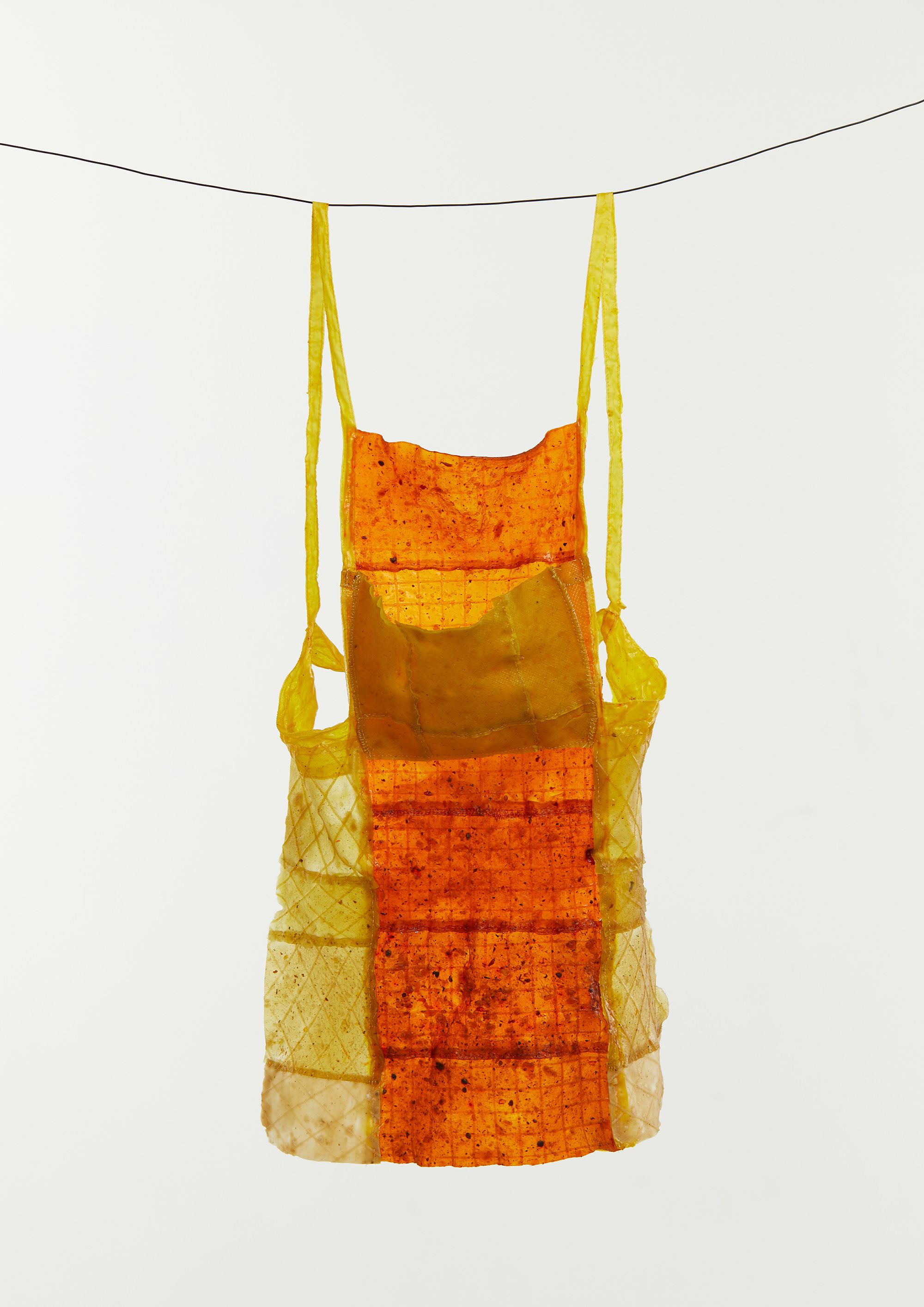
BA (Hons) Textile Design, Chelsea College of Arts, UAL | Photograph: Ziqi Li


BA Textile Design, print specialism student Ziqi Li has spent her time here at Chelsea College of Arts exploring bio-integrated textiles.
Ziqi’s graduate collection, FATWEAR challenges the viewer’s perception of fats and oils. The collection focusses on showing how fat waste could be a sustainable resource, and a variable texture biomaterial with both protective and phase change properties.

Delving deeply into the food market and restaurant food waste systems, Ziqi followed and tracked what happens to the waste fats and oils. Her aim is to change the perception of food fats and oils as merely waste, and instead be seen as a valuable resource. Ziqi hopes to transform food waste and fat, which is normally considered unpleasant, into something delicate, decorative, and hopefully even desirable.
FATWEAR includes samples that resemble very intricate lace patterns. Ziqi experimented using food dyes to achieve the collection’s varied colour palette.




Following graduation this summer, Ziqi intends to continue to work on the collection, with an idea developing and creating not just wearable garments, but also interior homewares. The initial thought being to create a tablecloth from the fat lace material, with the link back to food emphasising the focus on changing people’s perception about food waste fat.
“This study continues to develop new products that aim to grow awareness of food inequality and consumption,” said Ziqi.
Ziqi is continuing onto Postgraduate study at UAL at Central Saint Martin’s, where she will join MA Bio Design this September.

Telephone
+44 (0)20 7514 7751